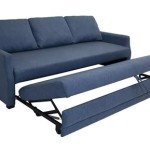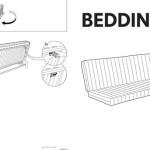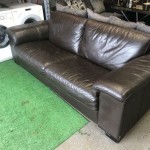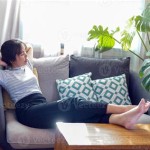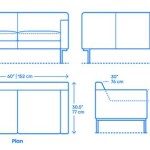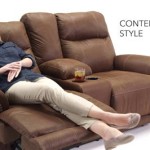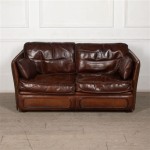Antique Victorian Sofa Styles: A Guide to Elegance and History
The Victorian era, spanning from 1837 to 1901, was a period of significant social, political, and industrial change. This transformation profoundly influenced art, architecture, and interior design. Furniture, especially sofas, became symbols of status, comfort, and aesthetic refinement. Antique Victorian sofas represent a diverse range of styles, characterized by ornate detailing, luxurious fabrics, and innovative construction techniques. Understanding these styles requires examining the key features, historical context, and distinguishing characteristics that define them.
Understanding the Broader Victorian Design Aesthetic
The Victorian period witnessed a shift from the relatively restrained elegance of the preceding Regency era to a more opulent and elaborate aesthetic. This change was fueled by industrial advancements, which allowed for mass production and access to an array of materials previously unavailable. The burgeoning middle class sought to emulate the lifestyle of the aristocracy, driving the demand for elaborate furniture pieces that showcased wealth and refinement.
Victorian design is characterized by a romantic and often sentimental approach. Decoration was paramount, and no surface was left unadorned. Ornamentation drew inspiration from diverse sources, including Gothic Revival, Rococo Revival, Renaissance Revival, and Aesthetic Movement influences. This eclecticism resulted in a rich tapestry of styles, making Victorian furniture highly distinctive. Deep colors like emerald green, ruby red, and sapphire blue were popular, reflecting the era's preference for dramatic visual impact. Fabrics such as velvet, brocade, and damask were favored for their luxurious texture and ability to showcase intricate patterns.
Symmetry and balance were also key principles in Victorian interior design. Sofas were often paired with matching armchairs or arranged to create symmetrical groupings within a room. The placement of furniture was carefully considered to create a sense of order and harmony, reinforcing the formal nature of Victorian social life.
Key Victorian Sofa Styles and Their Characteristics
The Victorian era encompasses several distinct sofa styles, each with unique features. Understanding these styles is crucial for identifying and appreciating antique Victorian sofas.
The Rococo Revival Sofa
The Rococo Revival, also known as Louis XV Revival, was a prominent style during the early to mid-Victorian period. This style draws inspiration from the 18th-century Rococo designs of France, characterized by curvilinear forms, elaborate carvings, and asymmetrical details. Rococo Revival sofas often feature serpentine or camelback shapes, with flowing lines and ornate embellishments. Legs are typically cabriole, gently curving outwards and terminating in scroll or pad feet. The frames are often adorned with intricate carvings of flowers, leaves, and scrolls, showcasing the craftsmanship of the period.
Upholstery fabrics used in Rococo Revival sofas were typically luxurious and richly textured, such as velvet, damask, or brocade. Colors were often vibrant and included shades of rose, gold, and emerald green. Button tufting was a common feature, adding to the plush and opulent appearance of the sofa. These sofas were designed to be focal points in a room, reflecting the Victorian emphasis on display and status.
The Gothic Revival Sofa
Inspired by medieval architecture, the Gothic Revival movement sought to incorporate elements of Gothic design into furniture and other decorative arts. Gothic Revival sofas typically feature pointed arches, trefoils, and quatrefoils, reflecting the architectural details found in Gothic cathedrals. Dark woods, such as walnut or mahogany, were commonly used for the frames, which were often heavily carved. Upholstery fabrics were typically dark and rich, such as velvet or leather, often featuring geometric patterns or heraldic motifs. The overall effect was one of grandeur and solemnity, evoking the spirit of the Middle Ages.
Gothic Revival sofas were often large and imposing, designed to command attention in a room. The legs were typically straight and often adorned with carved details, such as crockets or finials. The backs of these sofas were often high and elaborately carved, further emphasizing their architectural character. While less common than Rococo Revival sofas, Gothic Revival sofas represent a distinctive and significant style within the Victorian aesthetic.
The Renaissance Revival Sofa
The Renaissance Revival style drew inspiration from the art and architecture of the 15th and 16th-century Renaissance. Renaissance Revival sofas exhibit a more classical and symmetrical design, often featuring straight lines, balanced proportions, and architectural details such as columns, pilasters, and pediments. Walnut and rosewood were popular choices for the frames, which were often inlaid with marquetry or ornamented with ormolu mounts. Upholstery fabrics were typically luxurious and included silk, satin, and velvet, often in rich colors such as crimson, royal blue, and gold.
Renaissance Revival sofas often feature elaborate carvings depicting classical motifs, such as acanthus leaves, scrolls, and human figures. The legs were typically straight or slightly tapered, often featuring carved details or gilded accents. Button tufting was a common feature, adding to the plush and formal appearance of the sofa. These sofas were designed to convey a sense of elegance and refinement, reflecting the Victorian appreciation for classical art and culture.
The Aesthetic Movement Sofa
Emerging in the late Victorian period, the Aesthetic Movement represented a reaction against the excessive ornamentation and historical revivalism of earlier Victorian styles. Aesthetic Movement sofas were characterized by simplicity, elegance, and a focus on artistic expression. The style emphasized natural forms, Japanese-inspired motifs, and the use of high-quality materials. The frames were often made of ebonized wood or bamboo and were typically less ornate than those of earlier Victorian sofas. Upholstery fabrics were often muted in color and featured stylized floral or geometric patterns.
Aesthetic Movement sofas often incorporated elements of Japanese design, such as asymmetrical arrangements and the use of natural materials like bamboo or woven reeds. The emphasis was on creating a harmonious and visually pleasing effect, rather than on ostentatious display. These sofas were designed to be comfortable and functional, reflecting the Aesthetic Movement's focus on beauty and utility. Key characteristics include clean lines, a rejection of heavy ornamentation, and a preference for natural motifs and colors.
Materials and Construction Techniques
The materials and construction techniques used in Victorian sofas varied depending on the style, maker, and intended use of the piece. However, certain materials and methods were common throughout the period.
Hardwoods such as walnut, mahogany, rosewood, and oak were commonly used for the frames of Victorian sofas. These woods were chosen for their strength, durability, and ability to be carved and shaped. The frames were typically constructed using mortise-and-tenon joints, which provided a strong and stable foundation for the sofa. Springs were used in the seat and back to provide cushioning and support. These springs were typically made of steel and were attached to the frame using webbing or twine.
Upholstery fabrics were selected for their beauty, durability, and comfort. Velvet, damask, brocade, silk, and leather were popular choices, often featuring rich colors and intricate patterns. The upholstery was carefully applied to the frame, using techniques such as button tufting, which created a plush and decorative surface. The stuffing materials used in Victorian sofas included horsehair, feathers, and down, providing a comfortable and supportive seating experience.
The construction of Victorian sofas was labor-intensive and required skilled craftsmanship. Each piece was carefully constructed by hand, reflecting the Victorian emphasis on quality and attention to detail. The resulting sofas were not only beautiful but also durable and long-lasting, making them valuable antiques today.

Vintage Victorian Style Tufted Sofa Needs Reupholstery Sweden

Antique Victorian Furniture Styles Style Medallion On Tuck Sofa Couch For Styling Vintage Leather

Victorian Sofa Antique Vintage Couch

Victorian Sofa Before And After Restoration

Victorian Sofa Settee

Victorian Vintage Style Tufted Living Room Sofa Set Dst Home Furniture Manufacturer Exporter

French Royal Style Antique Victorian Vintage Flower Fabric Wooden Hand Carved Furniture Gold Classic Living Room Sofas China Leather Sofa Set Made In Com

Antique Victorian Carved Medallion Back Sofa With 2 Side Chairs Newly Upholstered In Green Velvet 3 Piece Parlor Set Chairish

Antique Victorian Style Walnut And Tufted Camel Back Sofa Circa 1920 At 1stdibs Styles Pink Couch

Victorian Style Couch Sofa Elegant Home Decor Homes

